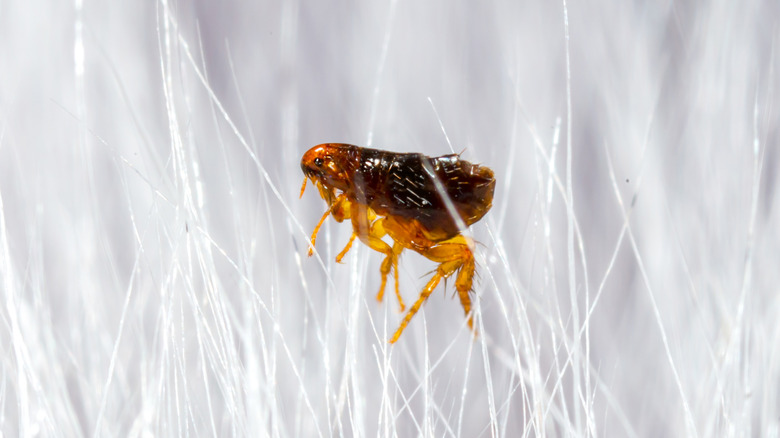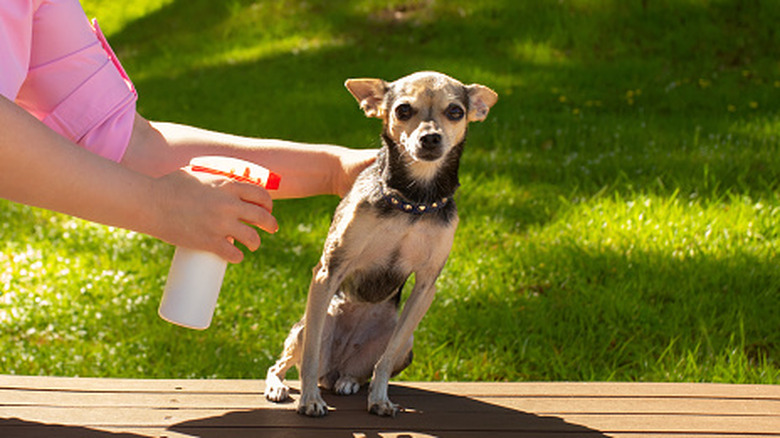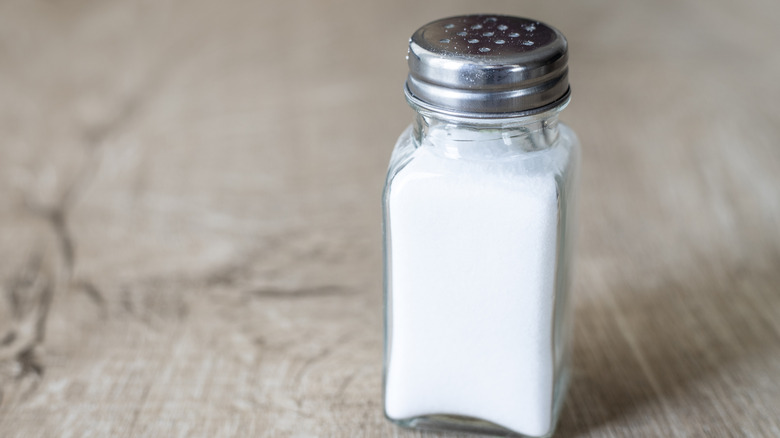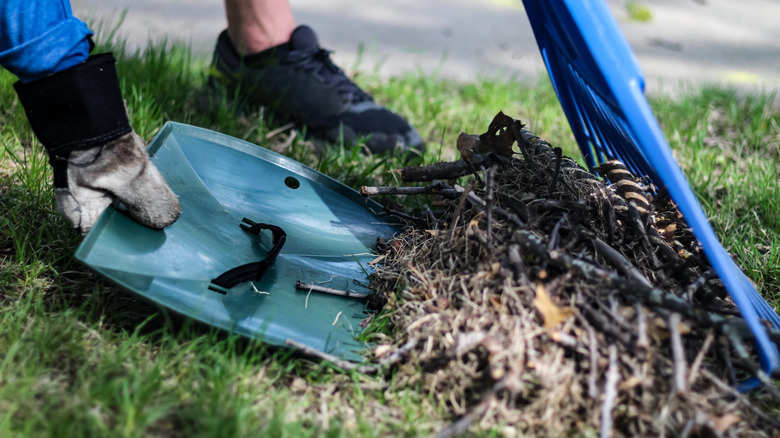Repel Fleas From Your Home With An Ingredient From Your Kitchen
We may receive a commission on purchases made from links.
If you have a pet, you'll want to keep fleas top of mind. Your furry friends can easily bring these tiny insects into your home where they can hide and thrive in upholstery, carpeting, and bedding. It often takes time to notice a flea problem, and when you do, it's too late — a complete infestation may be underway. You might see fleas jumping on furniture, find your pet is scratching a whole lot, or even discover that you have flea bites (small red bumps) yourself.
Luckily, there's an everyday ingredient that can prevent them from moving into your yard and house in the first place: vinegar, a truly versatile cleaning tool. While the kitchen staple doesn't directly kill fleas, it does a great job of repelling them, forcing them to move on to a more inviting environment. It's one of the many simple ways to get rid of fleas in your home. To make this homemade flea repellent, all you have to do is fill a spray bottle with equal parts water and white vinegar (apple cider vinegar works, too), then go to town, misting furniture, upholstery, pet bedding, carpets, and even floorboards. Be sure to pay particular attention to any spots where your pet likes to spend a lot of time, as those are likely to be the most problematic.
Using vinegar on your pet
In addition to spritzing your home with your DIY vinegar-water solution, experts also recommend using the mixture directly on the pets. This everyday ingredient is safe to use on their fur, and because fleas are put off by the smell and taste of vinegar, they'll likely avoid your pet if it's spritzed with it. You can use a spray bottle to mist your four-legged bestie or add vinegar to their bathtime routine. If you choose the latter, let the vinegar sit on their fur for a few minutes or, better yet, don't rinse it off at all and let it air dry.
Either way, be careful not to get the mixture in your pet's face. And remember: You're simply repelling the fleas, so you'll need to regularly use your DIY vinegar mix on your pet and around your house for it to work effectively and continuously.
Other DIY flea busters
White vinegar isn't the only household item that's great for combating fleas. Another handy and budget-friendly flea hack that works well is salt. If you suspect there are fleas in your home, crush table salt or sea salt into a fine powder and sprinkle it over carpeting and furniture, leaving it to work for 12 to 48 hours. Keep off the treated surfaces so you don't spread the salt everywhere, then vacuum it up and immediately throw away the bag or wash the canister to prevent re-infestation. While salt will actually kill fleas, it's important to note this method is quite messy and may need frequent applications. Just don't use salt on your pet and make sure your furry friends don't ingest it: Dr. Karyn Kanowski says salt can be toxic, even in small amounts (per Dogster).
You can also say goodbye to fleas with the help of one sweet-smelling herb: lavender. Similar to vinegar, lavender has an aroma that repels fleas. Fill a spray bottle with 1 ounce of water and 3 to 6 drops of lavender oil and spray your pet's collar to keep the insects at bay. Veterinarian Sandra C. Mitchell recommends against using essential oils directly on their fur and skin due to potential toxicity and the lack of long-term data on their safety (via PetMD). You can also plant lavender around your backyard, particularly in spots where your pet likes to hang out and around any seating areas where you and your family spend time.
Flea prevention tips for the home and garden
Fleas make their way into homes from the outdoors by "catching a ride" with pets that live in the dwelling. So, the task of keeping them out of the home starts outdoors. Apart from minimizing your pets' contact with stray animals or wildlife, you should deny these pests their favored conditions in the yard.
Fleas like to take shelter in warm, humid, and shady spots — of which there are plenty in a typical garden. You must eliminate these spots where possible. First, make sure you mow the lawn often and get rid of the clippings (exposed compost piles are a flea magnet, unfortunately). Likewise, clear debris, including fallen leaves and branches, anywhere you find it. Pay particular attention to areas under trees and in densely planted garden beds, where such debris tends to accumulate and offers fleas a warm, moist place to thrive. Crucially, keep rodents and other wild or feral animals from entering your property, since these animals may carry and spread fleas. Fortunately, there are plenty of humane ways to keep critters out of your yard. If your pets favor a particular spot in the yard, and you're worried about flea exposure there, cover the area with cedar chips, which are a powerful repellent for fleas.
Inside the house, create an inhospitable environment for fleas by maintaining cleanliness and avoiding clutter. Increase the frequency of cleaning tasks, such as vacuuming and mopping. Inspect fabric items, like bedding, drapery, towels, rugs, carpets, and furniture upholstery for signs of fleas and take active measures to destroy the pests if you find them.



